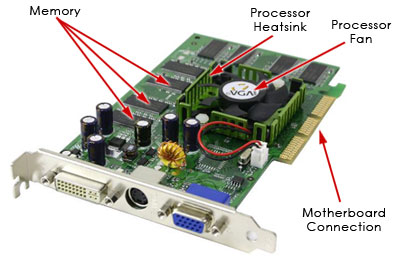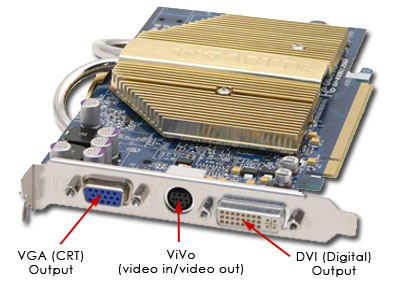This is a description of a graphics card found in computers for non-professionals. Pixels make up images seen on the computer monitor. According to a screen resolution setting, a screen may have more than one million pixels, and the computer must manage every pixel to develop an image. The computer relies on the translator (a part that transfers binary data from the CPU to transform them to images). The graphics card is an object that allows the translation of binary data to take place (Tyson & Wilson, 2001).
The graphics card, also known as a video card, performs a difficult task. However, one can easily understands its main parts and operational principles. It is important to understand how various parts of the video card function together to provide images on the monitor (Barett, 2016).
A computer works is like a company with multiple departments. Requests are sent to specific departments for execution and then the results are relayed back to respective destinations. A graphics card also works in a similar manner.
The CPU installed with other software solutions delivers requests concerning a picture to the graphics card. The graphics card then manipulates pixels found on the screen using complex procedures to develop images, and it then transfers the data to the screen. For instance, a 3D image requires the graphics card to develop images from binary data using these procedures and then serve all other pixels. Colors, lights, and texture are further included to enhance the quality of the image (Tyson & Wilson, 2001). For demanding functions, such as fast gaming, the computer must run 60 processes in a second. The graphics card performs this difficult assignment for the computer.

The graphics card fulfils this function through its four major parts. First, the motherboard is used to link power and data for manipulation. The second part is the processor, which changes pixels on the screen. Third, the memory stores information regarding every pixel, as well as pictures briefly. Finally, the monitor provides the final image on the screen.
The graphics card looks like a motherboard. It consists of a printed circuit board with RAM and a processor, an input/output system known as the BIOS chip for storing settings and conducting memory and input/output analyses. The graphics card processor known as the graphics processing unit (GPU), which is the same as the CPU, is made to conduct difficult mathematical and geometric analyses to support functions of the graphics card (Jolliffe, 2014). The GPU may be made faster with more transistor units and is connected to the motherboard using Peripheral component interconnect (PCI), Advanced graphics port (AGP), or PCI Express (PCIe).

Modern GPUs are installed with capabilities for massive analytical roles and enhanced capabilities (Shaikh, 2015). They also improve image quality through full scene anti-aliasing and anisotropic filtering. Various firms have development distinct techniques to differentiate their GPU in shading, colors, textures, and patterns. Once the GPU has created images, these images are stored in the RAM based on every pixel, color, and screen location. The RAM may also provide a frame buffer for holding images ready for display.
The RAM is readily connected to the digital-to-analog converter known as DAC or the RAMDAC, which changes images into analog signals for computer monitors. Some graphics cards are installed with multiple RAMDACs to enhance presentation and run multiple screens as they relay refined images to the screen.
References
Barett, J. T. (2016). The purpose of a graphics card. Web.
Jolliffe, C. (2014). Understanding Graphics Cards – a Laymen’s Guide. Web.
Shaikh, S. (2015). Complete Computer Hardware Only. Mainz: PediaPress.
Tyson, J., & Wilson, T. V. (2001). How graphics cards work. Web.